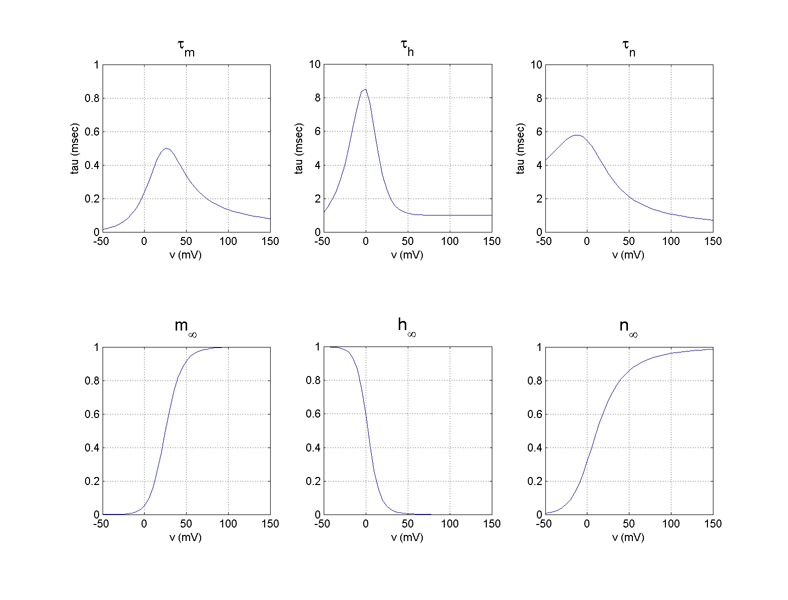
1. One of the most error-prone steps in implementing HH models is in evaluating the voltage-dependent rate constants alpha(v) and beta(v). For that reason, it's always a good idea to check you implementation by plotting the time constants and steady-state values as a function of voltage. It's much easier to spot errors in these plots than in the raw rate plots. Recall:

(a) Write a set of six subroutines (alpha_m, beta_m, alpha_h, beta_h, alpha_n and beta_n) that return rate constants as a function of voltage for the HH state variables m, n and h. Use the expressions given in HH52 (eqs. 12, 13, 20, 21, 23, 24) BUT REVERSE THE SIGN OF THE VOLTAGE to conform to the modern voltage convention. Note that some of the expressions evaluate to the indeterminant form "0/0" at certain voltages. Handle this case properly in your subroutines by applying L'Hopitals Rule: i.e. for f(a) = g(a) = 0:

(b) Generate and turn in plots of TAUm(v) , TAUh(v), TAUn(v), minfty(v) , hinfty(v) and ninfty(v) for voltages in the range -50 <= v <= 150.
Check your results against the following figure.

 HOMEWORK home page
HOMEWORK home page